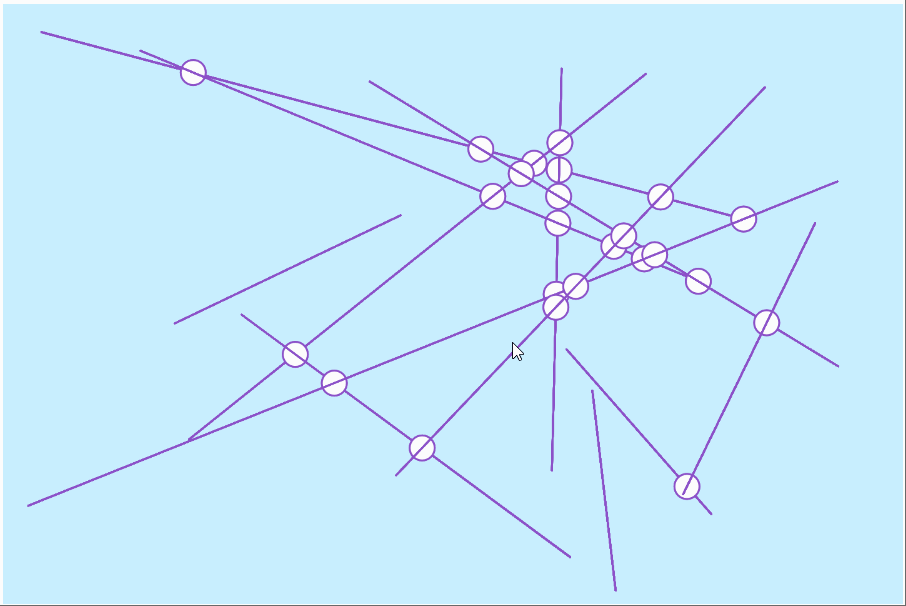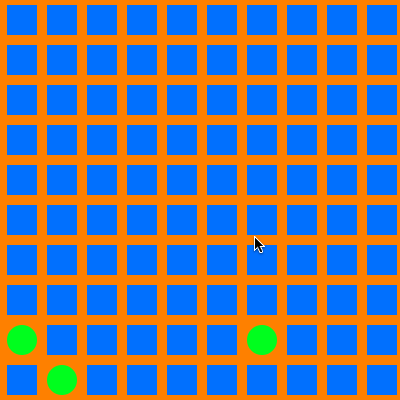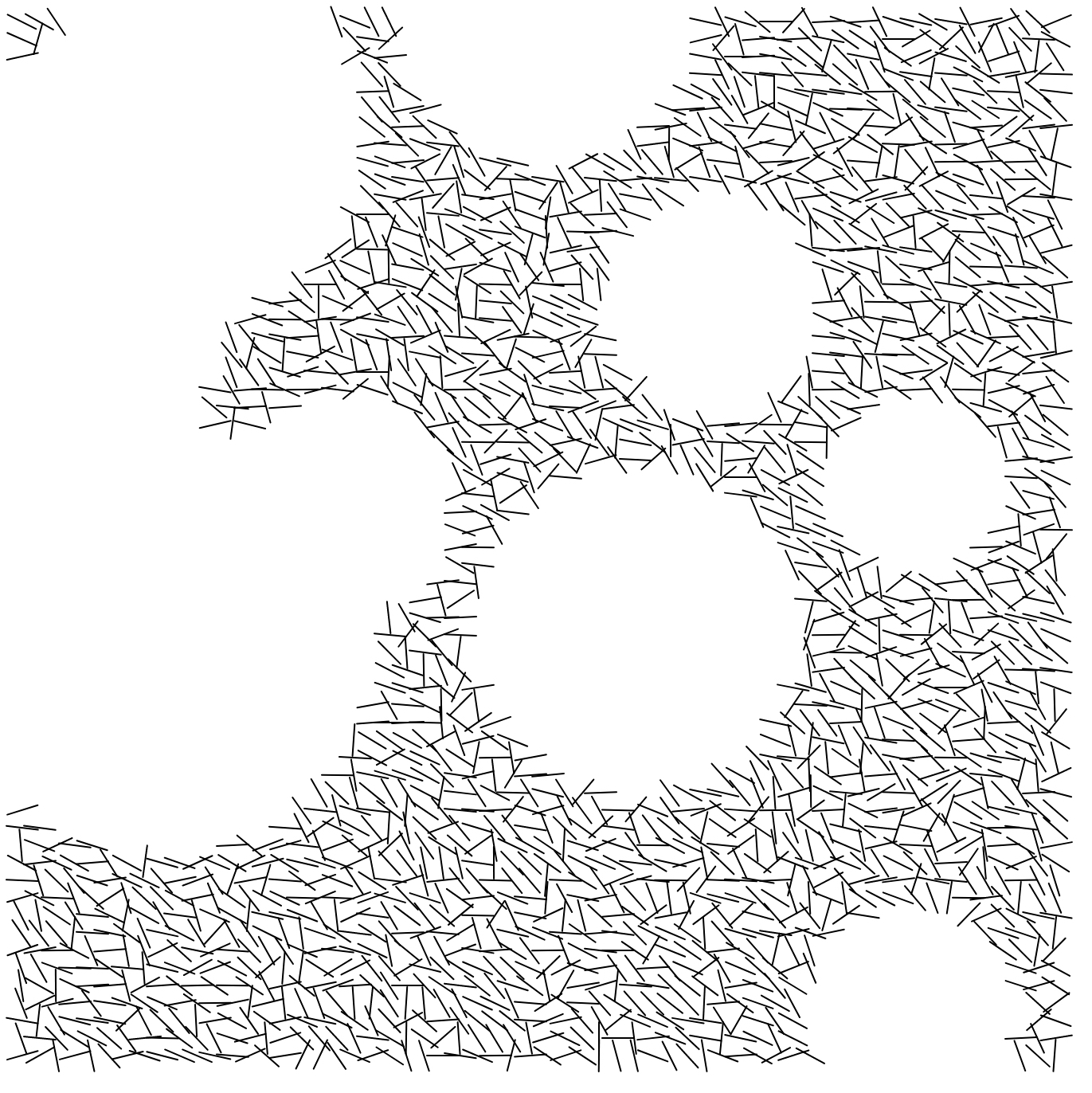var lineNum = 12;//change this number to get more lines
var lineSets = [];
function setup() {
createCanvas(720, 480);
lineGenerator();
}
function draw() {
background(255);
for (var j = 0; j < lineNum; j++){
var x1 = lineSets[j][0];
var y1 = lineSets[j][1];
var x2 = lineSets[j][2];
var y2 = lineSets[j][3];
line(x1, y1, x2, y2);
for (var s = 0; s < lineNum; s++){
var x3 = lineSets[s][0];
var y3 = lineSets[s][1];
var x4 = lineSets[s][2];
var y4 = lineSets[s][3];
if (intersect(x1, y1, x2, y2, x3, y3, x4, y4) != false){
var cCenter = intersect(x1, y1, x2, y2, x3, y3, x4, y4);
fill("pink");
ellipse(round(cCenter[0]), round(cCenter[1]), 10);
}
}
}
text("Number of Lines:" + lineNum, 10 ,20);
text("* Up/Down Key to Increase/Decrease *", 10 ,35);
}
function mousePressed() {
lineGenerator();
}
function keyPressed() {
if (keyCode === UP_ARROW) {
lineNum += 1;
lineGenerator();
} else if (keyCode === DOWN_ARROW) {
lineNum -= 1;
lineGenerator();
}
}
function lineGenerator(){
lineSets = [];
for (var i = 0; i < lineNum; i++){
var x1 = round(random(0,width+1));
var y1 = round(random(0,height+1));
var x2 = round(random(0,width+1));
var y2 = round(random(0,height+1));
lineSets[i] = [x1, y1, x2, y2]
}
}
// taken and modified from http://paulbourke.net/geometry/pointlineplane/javascript.txt
// line intercept math by Paul Bourke http://paulbourke.net/geometry/pointlineplane/
// Determine the intersection point of two line segments
// Return FALSE if the lines don't intersect
function intersect(x1, y1, x2, y2, x3, y3, x4, y4) {
// Check if none of the lines are of length 0
if ((x1 === x2 && y1 === y2) || (x3 === x4 && y3 === y4)) {
return false
}
var denominator = ((y4 - y3) * (x2 - x1) - (x4 - x3) * (y2 - y1))
// Lines are parallel
if (denominator === 0) {
return false
}
var ua = ((x4 - x3) * (y1 - y3) - (y4 - y3) * (x1 - x3)) / denominator
var ub = ((x2 - x1) * (y1 - y3) - (y2 - y1) * (x1 - x3)) / denominator
// is the intersection along the segments
if (ua < 0 || ua > 1 || ub < 0 || ub > 1) {
return false
}
// Return a object with the x and y coordinates of the intersection
var x = x1 + ua * (x2 - x1)
var y = y1 + ua * (y2 - y1)
return [x, y]
} |







